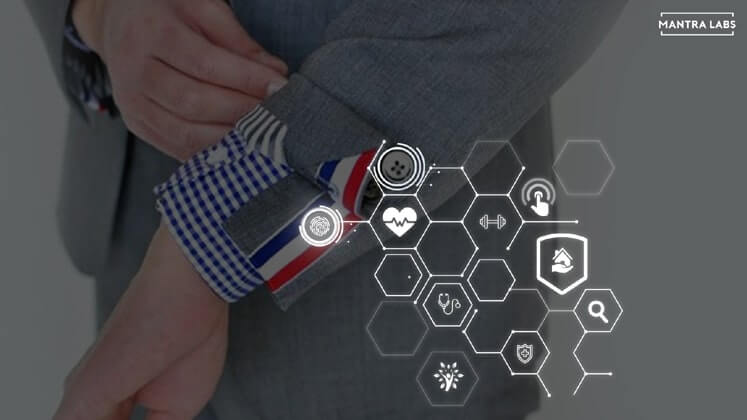Smart Fabrics and Wearables: The Convergence of Fashion and Technology
Introduction
The Fabric of the Future
In the dynamic intersection of fashion and technology, smart fabrics and wearables emerge as a groundbreaking synergy, redefining the way we engage with clothing and accessories. No longer confined to mere adornments, fabrics are becoming intelligent, responsive, and capable of enhancing our lives in unprecedented ways. This exploration delves into the realm of smart fabrics and wearables, unraveling the innovative technologies woven into the fabric of the future.
I. The Evolution of Wearable Technology: A Journey from Function to Fashion
1. Early Wearable Technologies:
- Functional Beginnings: The origins of wearables in utilitarian devices like wristwatches and pedometers.
- Health and Fitness Trackers: The rise of fitness wearables as early adopters of smart technology.
2. Technological Advancements:
- Miniaturization: The shrinking of electronic components to make wearables more discreet and comfortable.
- Connectivity: The advent of Bluetooth and wireless connectivity, enabling seamless communication between wearables and other devices.
3. The Fashion Tech Revolution:
- Integration of Fashion and Technology: Designers embracing technology as an integral part of fashion.
- Runway to Retail: The transition of smart wearables from fashion runways to mainstream consumer markets.
II. Smart Fabrics: Weaving Intelligence into Textiles
1. Basics of Smart Fabrics:
- Definition and Characteristics: What defines a fabric as “smart”?
- Functionality and Integration: Incorporating sensors, actuators, and other components into textile structures.
2. Types of Smart Fabrics:
- Conductive Fabrics: Textiles with embedded conductive materials for electronic connectivity.
- Shape Memory Fabrics: Materials that can change shape or return to a pre-defined shape in response to stimuli.
- Phase Change Materials: Fabrics that regulate temperature by absorbing, storing, and releasing heat.
3. Sensor Technologies in Fabrics:
- Pressure Sensors: Fabric-based sensors for monitoring pressure and touch.
- Stretch and Strain Sensors: Textiles that can sense changes in fabric stretch and deformation.
- Biometric Sensors: Fabrics capable of measuring physiological parameters like heart rate and body temperature.
III. Applications of Smart Fabrics in Different Industries
1. Healthcare and Medical Wearables:
- Smart Garments for Monitoring: Clothing with built-in sensors to monitor vital signs and health metrics.
- Rehabilitation Wearables: Fabrics used in wearable devices for physical therapy and rehabilitation.
2. Sports and Fitness:
- Performance-Enhancing Apparel: Smart fabrics that improve athletic performance through monitoring and feedback.
- Wearable Fitness Trackers: Integration of fitness tracking capabilities directly into sportswear.
3. Fashion and Apparel Industry:
- Interactive Fashion Shows: Smart fabrics and wearables taking center stage in fashion presentations.
- Adaptive Clothing: Textiles that adapt to changing environmental conditions or user preferences.
4. Military and Defense:
- Intelligent Uniforms: Fabrics with embedded sensors for monitoring soldiers’ health and environmental conditions.
- Camouflage Technology: Smart textiles that can adapt to different surroundings for enhanced stealth.
IV. The Rise of Wearable Devices: Beyond Smartwatches
1. Smartwatches and Fitness Trackers:
- Health Monitoring: Wearables with capabilities for tracking heart rate, sleep patterns, and physical activity.
- Integration with Smartphones: The role of smartwatches as extensions of smartphone functionalities.
2. Augmented Reality (AR) Glasses:
- AR Integration in Eyewear: Wearables that overlay digital information onto the user’s physical environment.
- Navigation and Information Display: AR glasses for providing directions, information, and contextual data.
3. Smart Clothing and E-Textiles:
- Intelligent Garments: Clothing with embedded electronics for enhanced functionality.
- E-Textiles in Everyday Wear: The incorporation of smart fabrics into everyday clothing items.
4. Smart Jewelry and Accessories:
- Connected Jewelry: Wearables in the form of rings, bracelets, and necklaces with smart features.
- Fashion Tech Accessories: Integrating technology seamlessly into fashion accessories.
V. Challenges in Smart Fabrics and Wearables Adoption
1. Technical Challenges:
- Power Consumption: Addressing the power requirements of wearable devices and ensuring long battery life.
- Durability and Washing: Ensuring that smart fabrics and wearables can withstand regular washing and wear.
2. Design and Aesthetic Concerns:
- Aesthetics and Comfort: Balancing the visual appeal of smart garments with comfort for the wearer.
- Integration with Fashion Trends: Keeping pace with evolving fashion trends while incorporating technology.
3. Interoperability and Standardization:
- Compatibility: Ensuring that wearables can seamlessly connect and interact with other devices.
- Standardization Efforts: Establishing industry standards for smart fabrics and wearables.
VI. Future Prospects: A Tapestry of Possibilities
1. Healthcare and Wellness:
- Remote Patient Monitoring: Smart fabrics playing a role in remote health monitoring.
- Health Diagnostics: Wearables capable of early detection of health issues.
2. Personalized Fashion Experiences:
- Customizable Apparel: Smart fabrics allowing users to customize clothing patterns, colors, and functionalities.
- Adaptive Fashion: Garments that adjust based on the wearer’s preferences and environmental conditions.
3. Sustainability and Eco-Friendly Fabrics:
- Smart Textiles in Sustainable Fashion: Exploring eco-friendly materials and production processes.
- Recyclability: Designing smart fabrics with an emphasis on recyclability and reduced environmental impact.
4. Integration with Artificial Intelligence (AI):
- AI-Driven Wearables: Smart fabrics and wearables that leverage AI for personalized user experiences.
- Predictive Analytics: Anticipating user needs based on historical data and preferences.
VII. Ethical Considerations and Social Impact: Fashioning a Responsible Future
1. Data Privacy and Security:
- Personal Data Protection: Ensuring that wearable devices safeguard user data and privacy.
- Ethical Data Use: Addressing concerns related to the ethical use of data collected by smart fabrics.
2. Accessibility and Inclusivity:
- Universal Design: Creating smart fabrics and wearables that cater to diverse user needs.
- Affordability: Making these technologies accessible to a broad spectrum of consumers.
3. Cultural Sensitivity:
- Respect for Cultural Norms: Considering cultural sensitivities in the design and functionality of smart wearables.
- Representation: Ensuring inclusivity in terms of design elements that resonate with diverse cultural backgrounds.
Conclusion: Tailoring Tomorrow with Smart Fabrics and Wearables
In the grand tapestry of technological evolution, the intertwining threads of smart fabrics and wearables have woven a narrative that extends far beyond mere fashion. As we conclude our exploration into this captivating realm where textiles meet technology, it becomes evident that the future of clothing is being tailored with innovation, sophistication, and a touch of the extraordinary.
The journey began with the humble origins of wearables as functional devices, gradually transforming into fashion-forward accessories that seamlessly blend with our daily lives. Today, smart fabrics stand as the bedrock, introducing intelligence to the very fibers of our clothing. These fabrics, adorned with sensors, actuators, and connectivity, have transcended their traditional roles, becoming conduits for health monitoring, personalized experiences, and a new era of self-expression.
The evolution of smart fabrics mirrors the trajectory of wearables, from early fitness trackers to the integration of augmented reality glasses and the fusion of technology with everyday accessories. The narrative extends beyond the realm of utility, embracing the aesthetics of fashion and the personalized experiences that arise when technology and clothing coalesce.
As we peer into the future, the prospects painted by smart fabrics and wearables are a palette of endless possibilities. In healthcare, these innovations promise not only to monitor but to actively contribute to well-being, with fabrics that become a seamless part of the healthcare ecosystem. The fashion landscape, too, is undergoing a metamorphosis, with clothing that adapts to individual preferences, enabling a level of customization that transcends the boundaries of conventional fashion.
Sustainability takes center stage, as smart textiles explore eco-friendly materials and production processes. The conscientious integration of artificial intelligence into wearables hints at a future where predictive analytics and AI-driven personalization redefine our relationship with clothing and accessories.
However, this transformative journey is not without its challenges. Technical hurdles, design considerations, and the imperative of privacy and security demand careful navigation. As we don these intelligent garments, questions surrounding data ethics, accessibility, and cultural sensitivity beckon us to tread responsibly into this brave new world where technology intertwines with our very attire.
In conclusion, the narrative of smart fabrics and wearables is not merely a story of innovation but a testament to the dynamic synergy between the worlds of fashion and technology. It beckons us to envisage a future where what we wear is not just a statement of style but a reflection of our evolving relationship with the digital realm. As the fashion industry stitches intelligence into the fabric of our garments, we find ourselves at the crossroads of a sartorial revolution, where every thread tells a story of a future where clothing is not just adorned but alive with possibility, functionality, and the promise of a more connected, personalized, and conscientious tomorrow.











